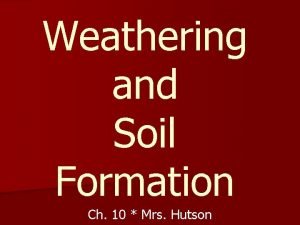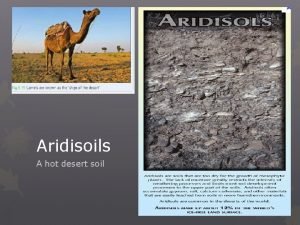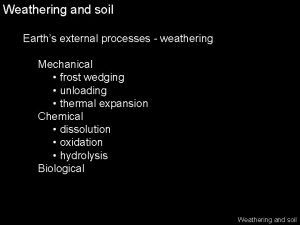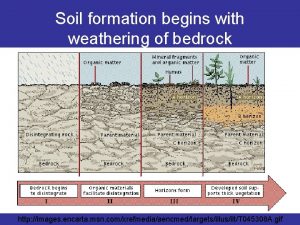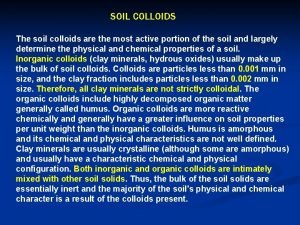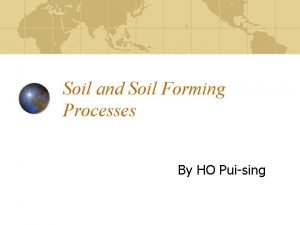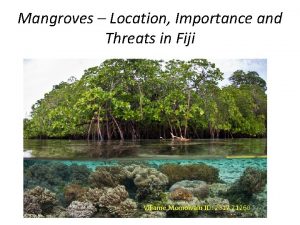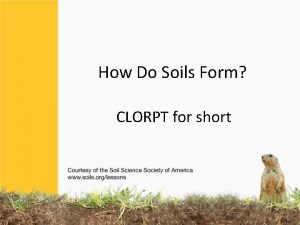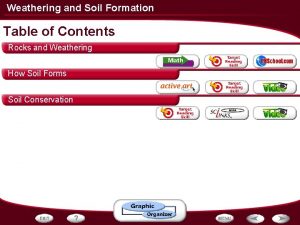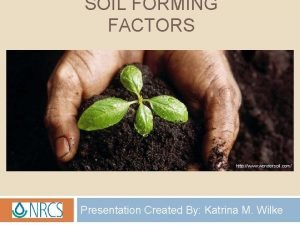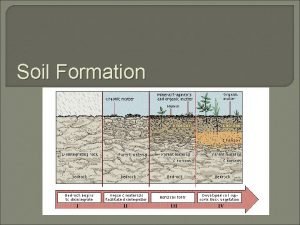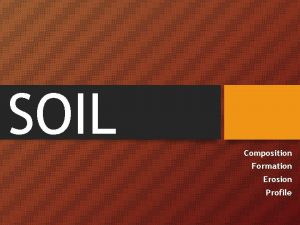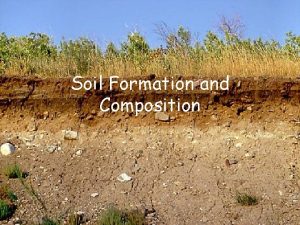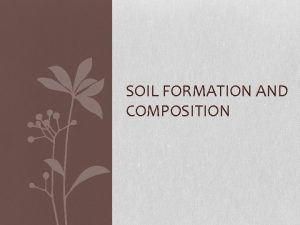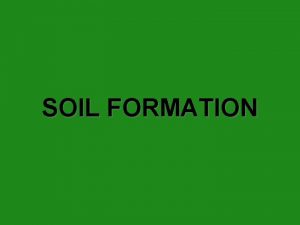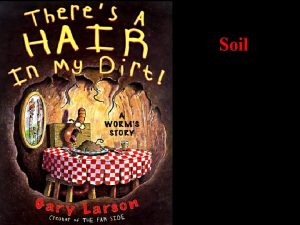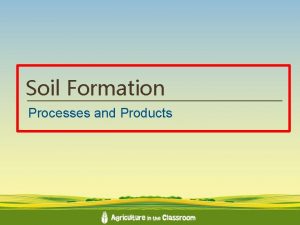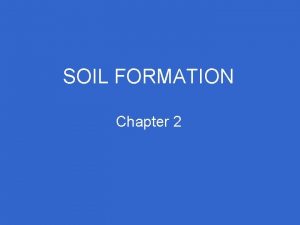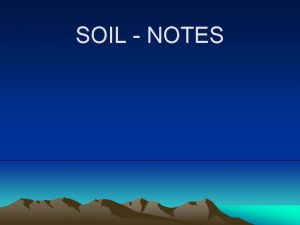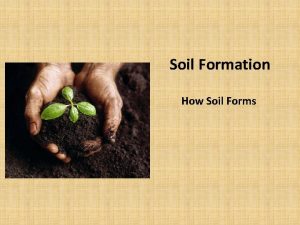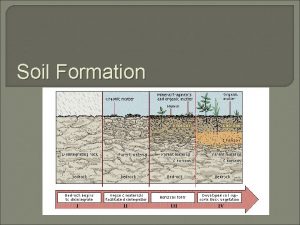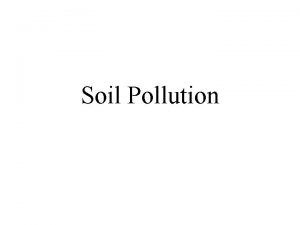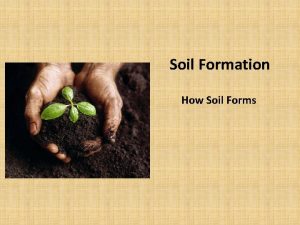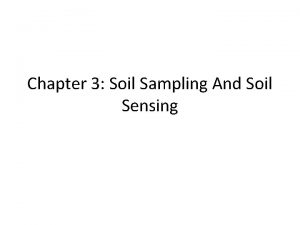Chapter Seven Soil Formation and Composition What is



















- Slides: 19

Chapter Seven Soil Formation and Composition

What is soil? • Soil - combination of mineral and organic matter, water, and air • It is that portion of the weathered rock and mineral that supports the growth of plants • Soil begins as rock is broken down and mixes with other materials.

How is soil formed? • Soil is formed wherever bedrock is exposed to weathering. • Bedrock – solid layer of rock beneath the soil.

What makes up soil? • Rock, minerals, decayed organic material, air & water. • The type of rock depends on: 1. Type of bedrock 2. Type of weathering Humus = decayed organic material - makes space for air & water in soil. - nutrient rich promote plant growth

Components in soil that support plant growth Mineral Matter Silt 18% Sand 18% Clay 9%

What determines how soil feels? • Soil is made up • The amount of particles in of particles the soil which vary in determines size. –Gravel –Sand –Silt –Clay how well certain plants will grow.

Too Much Gravel & Sand? ? = soil won’t hold much water. Too Much Clay? ? = soil will be heavy and dense, may hold too much water and have not enough air. Loam = soil that is made of equal parts of clay, sand & silt. Loam is best for growing.

Soil Horizon or Profile • Soil develops over time and forms layers or horizons. • A Horizon = Topsoil • Topsoil = crumbly dark soil = mixture of clay, humus and minerals • B Horizon = Subsoil • Subsoil = Minerals washed down from above = mostly clay • C Horizon = Partly weathered rock.

An idealized soil profile with horizons



What determines how fast soil forms? • 1. Climate 2. Type of rock. • Soil = weathered rock and particles • Weathering happens most quickly in hot, wet climates. • These climates will make soil the quickest. • What type of climate will make soil the slowest?

Review • 1. What is soil? • 2. How is soil formed? • 3. Why isn’t a soil lots of clay good for plant growth? • 4. What is humus? What is loam? • 5. What are three basic horizons in the soil profile? • 6. What determines the rate of soil formation?

What is happening in the soil? • Organisms that live in the soil mix the soil and create spaces for water and air. (moles, mice, chipmunks). • Some organisms make humus which makes soil rich. (plants die). • Some animals are decomposers – break down dead material (bacteria, fungi, worms)



Other animal activities? ? ? • Don’t forget that some soil is very rich in… …… Fertilizer …. Animal waste …. which is rich in nitrogen …. …. which helps plants grow …. Aren’t you glad … you’re not a plant?

What kind of soil is in the USA? • Soils vary greatly across the US and are dependent on climate and type of rock.

Temperature Annual precipitation Equatorial and tropical rain forests Savannahs Low-latitude deserts and semi-deserts Grasslands (steppes) Temperate regions and mixed boreal forests 30 degrees Latitude 40ºC 1800 mm Equator to Poles Factors Equator 30ºC Precipitation Temperature Evaporation 20ºC 600 mm 10ºC Bedrock at or very near surface Increasing depth of weathering Soil Deeply weathered bedrock (~40 - 50 meters deep) Soil Bedrock Arctic and tundra regions
 Chapter 10 weathering and soil formation answers
Chapter 10 weathering and soil formation answers Living soil vs dead soil
Living soil vs dead soil Four major spheres of the earth
Four major spheres of the earth 7 heavenly virtues
7 heavenly virtues Soil components pie chart
Soil components pie chart Desert soil layers
Desert soil layers Characteristic of soil
Characteristic of soil Soil lab apes
Soil lab apes Eluviation and illuviation
Eluviation and illuviation Soil formation begins with weathering of
Soil formation begins with weathering of Soil colloids size
Soil colloids size Regolith in soil profile
Regolith in soil profile Soil colloids ppt
Soil colloids ppt Soil formation
Soil formation O a b c r
O a b c r Clorpr
Clorpr Stages of soil development
Stages of soil development Weathering types
Weathering types Soil factors
Soil factors Soil profile
Soil profile
